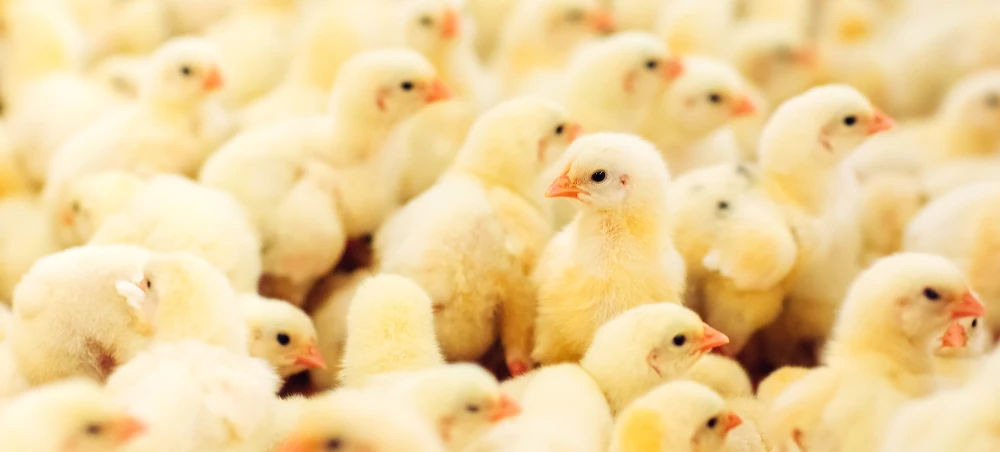Broiler chicken – a key indicator species of the Anthropocene
nr katalogowy: 153704
10.15199/2.2025.4.2
Streszczenie
Udomowienie zwierząt rozpoczęło się w neolicie, a dziś tylko kilka gatunków, takich jak bydło, owce, świnie i kury, stanowi podstawę produkcji żywności na świecie. Przemysłowa hodowla zwierząt doprowadziła do ogromnego wzrostu ich biomasy, która obecnie stanowi 60 proc. biomasy ssaków, podczas gdy biomasa dzikich zwierząt spadła dramatycznie. Przykładem tego jest kurczak, którego populacja liczy 22,7 miliarda osobników, co sprawia, że jest najliczniejszym ptakiem na świecie. Hodowla brojlerów, przeznaczonych głównie na mięso, ma znaczący wpływ na biologię tych zwierząt, prowadząc do patologii i skrócenia ich życia. Brojlery, całkowicie zależne od człowieka, mogą stać się markerem antropocenu, podobnie jak inne materiały antropogeniczne.
Abstract
The domestication of animals began in the Neolithic period, and today only a few species, such as cattle, sheep, pigs, and chickens, form the basis of global food production. Industrial animal farming has led to a massive increase in their biomass, which now constitutes 60 per cent of the biomass of mammals, while the biomass of wild animals has dramatically decreased. An example of this is the chicken, with a population of 22.7 billion individuals, making it the most numerous bird in the world. Broiler farming, primarily for meat production, significantly affects the biology of these animals, leading to pathologies and a shortened lifespan. Broilers, entirely dependent on humans, could become a marker of the Anthropocene, much like other anthropogenic materials.
Słowa kluczowe / Keywords
Bibliografia
[1] Barnosky A., Hadly E., Bascompte J., Berlow E. L., Brown J. H. et al. 2012. Approaching a state shift in Earth’s biosphere. Nature 486: 52–58. https://doi.org/10.1038/nature11018
[2] Bar-On Y.M., Phillips R., Milo R. 2018. The biomass distribution on Earth. Proc. Natl Acad. Sci. USA 115 (25): 6506-6511. https://doi.org/10.1073/pnas.1711842115
[3] Bennett C. E., Thomas R., Williams M., Zalasiewicz J., Edgeworth M. et al. 2018. The broiler chicken as a signal of a human reconfigured biosphere. Royal Society Open Science 5:180325. http://doi.org/10.1098/rsos.180325
[4] Boland M. J., Rae A. N., Vereijken J. M., Miranda P. M. Meuwissen et al. 2013. The future supply of animalderived protein for human consumption. Trends in Food Science & Technology 29: 62–73. https://doi.org/10.1016/j. tifs.2012.07.002
[5] Ceballos G., Ehrlich P. R., Dirzo R. 2017. Biological annihilation via the ongoing sixth mass extinction signaled by vertebrate population losses and declines. Proc. Natl Acad. Sci. USA 114, E6089–E6096. https://doi.org/10.1073/pnas.1704949114
[6] Collias N., Collias E., Jennrich R. I. 1994 Dominant red junglefowl (Gallus gallus) hens in an unconfined flock rear the most young over their lifetime. Auk 111: 863–872.
[7] FAO 2007. The State of the World’s Animal Genetic Resources for Food and Agriculture. Rischowsky B., Pilling D. (eds.) FAO, Rome.https://openknowledge.fao.org/handle/20.500.14283/ a1250e, dostęp 23.03.2025
[8] FAO: Food and Agriculture Organization of the United Nations. FAOSTAT database. http://faostat3.fao.org, dostęp 23.03.2025
[9] Hung C. M., Shaner P.-J. L., Zink R. M., Liu W.-C., Chu T.-C. et al. 2014. Drastic population fluctuations explain the rapid extinction of the passenger pigeon. Proc. Natl Acad. Sci. USA 111: 10 636–10 641. https://doi.org/10.1073/pnas.1401526111
[10] Inger R., Gregory R., Duffy J. P., Stott I., Gaston K. J. 2015. Common European birds are declining rapidly while less abundant species’ numbers are rising. Ecology Letters 18: 28–36. https://doi.org/10.1111/ele.12387
[11] Invasive Species Compendium. http://www.cabi.org/isc/ datasheet/66441,dostęp 23.03.2025
[12] MacDonald J. M. 2014 Technology, organization, and financial performance in U.S. broiler production, EIB-126. U.S. Department of Agriculture, Economic Research Service, June 2014.
[13] Ripple W. J., Wolf Ch., Galetti M., Newsome T. M., Alamgir M. et al. 2017. World Scientists’ Warning to Humanity: A Second Notice. Bioscience 67(12): 1026-1028.https://doi. org/10.1093/biosci/bix125
[14] Smil V. 2011. Harvesting the Biosphere. The Human Impact. Population and Development Review 37: 613-636.
[15] Steinfeld H. et al. 2006. Livestock’s long shadow: environmental issues and options. Rome, Italy: Food and Agriculture Organization of the United Nations.https://www.fao.org/4/ a0701e/a0701e00.htm, dostęp 23.03.2025
[16] Storey A. A. Athens J. S., Bryant D., Carson M., Emery K. et al. 2012 Investigating the global dispersal of chickens in prehistory using ancient mitochondrial DNA signatures. PLoS ONE 7, e39171. https://doi.org/10.1371/journal.pone.0039171
[17] Westa B., Zhou B.-X. 1988. Did chickens go North? New evidence for domestication. Journal of Archaeological Science15 (5): 515-533. https://doi.org/10.1016/0305-4403(88)90080-5
[18] Zuidhof M. J., Schneider B. L., Carney V. L., Korver D. R., Robinson F.E. 2014. Growth, efficiency, and yield of commercial broilers from 1957, 1978, and 2005. Poultry Science 93: 2970–2982. https://doi.org/10.3382/ps.2014-04291
